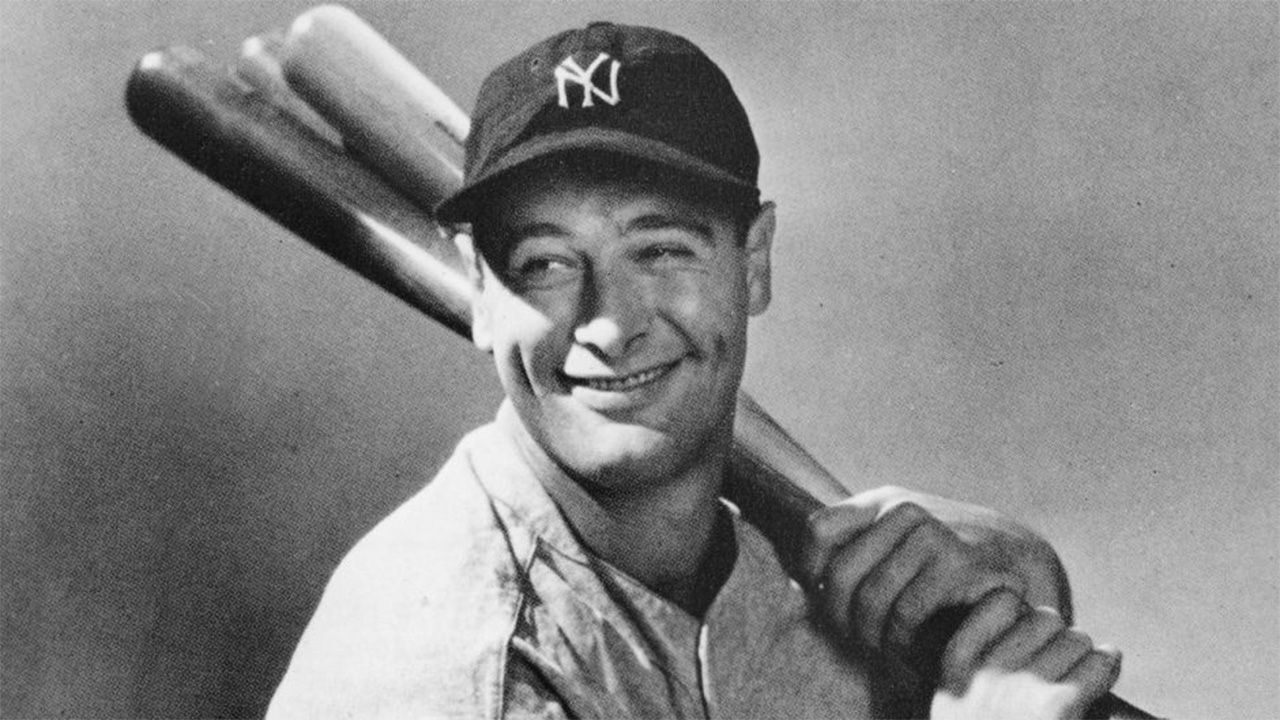Last year I had the opportunity to read and review Last Ride of the Iron Horse by author Dan Joseph. Joseph’s book, which wonderfully covered Lou Gehrig’s 1938 season, deepened my appreciation for Lou’s legacy. Gehrig was not only a great athlete, he was also a great man. He was the embodiment of everything that we can and should expect out of our sports heroes. He was, in short, a legend.
Because I’ve become more and more interested in Lou’s life, I was incredibly excited to read Lou Gehrig: The Lost Memoir, a newly released book by Alan D. Gaff. While there are many excellent Gehrig books on the market, Gaff’s is unique because it includes material penned by Lou Gehrig himself.
During the 1927 season, Lou wrote a number of articles that appeared in a series entitled Following the Babe. Released in newspapers, Lou’s articles documented his life before baseball, his career with the Yankees, and, finally, each game of the 1927 World Series. Unfortunately, Gehrig’s entertaining and insightful anecdotes disappeared for decades. They were incredibly difficult to find, and, as a result, were ignored by writers who told Lou’s story. Gaff discovered these articles and decided to publish them for interested baseball fans in the first part of his exceptional new book.
A Look at Lou’s Memoirs
While reading through Lou’s memoirs, I was struck by his signature humility. Despite the fact that he was writing Following the Babe during the peak of his athletic career, Gehrig rarely mentions his own accomplishments on the diamond. Instead, he takes time to praise his Yankee teammates and coaches.
No other Yankee gets more accolades from Lou than the Babe. Gehrig’s lifelong admiration for Ruth began when Lou was still in college at Columbia University. Andy Coakley, Columbia’s baseball coach, took Lou to a Yankee game so that the aspiring star could see Babe Ruth in action. Lou was so impressed by Ruth’s performance that he immediately became a huge fan of Babe and the Yankees.
Gehrig frequently mentions the advice Ruth gave him regarding life as well as baseball. The two were polar opposites in many respects (Lou was quiet, Babe was the center of attention), but they were also the perfect pair. On the field, Ruth and Gehrig helped build the first Yankee dynasty with their powerful bats. Off the field, they both devoted time and money to the kids who cheered them on. Always happy to shine a spotlight on others, Lou shares several touching stories about the Babe’s softer side.
Gehrig has plenty of complimentary things to say about his other teammates as well. He frequently talks up Tony Lazzeri, Herb Pennock, and manager Miller Huggins. Lou’s memoirs give readers an inside look at these Yankee legends. He talks about their interests off the field, their contributions to the great Yankee teams of the 1920s, and the ways in which they helped him become a better ballplayer. Anybody interested in learning more about the ’20s Yankees will thoroughly enjoy Lou’s thoughtful analysis.
Gaff’s Great Biography
Gaff’s short biographical essay on Gehrig, which makes up the second half of Lou Gehrig: The Lost Memoir, is also excellent. There are, of course, countless sources for facts on Lou’s life. A quick internet search could tell you when Lou was born, when he went to college, when he joined the Yankees, and when he was forced to retire due to ALS. The great thing about Gaff’s biography is that he weaves together the details of Lou’s life in a captivating story. He masterfully describes Gehrig’s journey from chubby, introverted child to world class athlete. This second part of Lou Gehrig: The Lost Memoir made the Iron Horse’s story come alive for me in a new way.
After covering Gehrig’s baseball career, Gaff spends some time discussing the deep impact that Lou had on his fellow Americans. He recounts the powerful story of a soldier who wrote to Lou’s widow, Eleanor, during the dark days of World War II. The soldier told Eleanor that he and his comrades looked to Lou’s life as an example of courage and fortitude in the face of adversity.
In that same spirit of remembrance, the U.S. Navy named a transport ship in honor of Gehrig during the war. On June 19, 1944 (what would have been Gehrig’s 41st birthday), the SS Lou Gehrig helped land troops on the beaches of Normandy, France. Gaff shows us that, even after death, Gehrig served as a source of inspiration for millions and millions of Americans. It’s difficult to imagine a modern athlete having the same type of impact on the world that Lou did almost eighty years ago.
The Verdict
I would gladly recommend Lou Gehrig: The Lost Memoir to anybody interested in a great baseball book. By providing us with an opportunity to read Lou’s own words, Gaff gives us a remarkable window into Gehrig’s life and times. If you want to learn more about Lou’s career in pinstripes, than Gaff’s book is a great place to start. You’ll come away with a thorough knowledge of Gehrig both as a player and as a man.
For a book full of great material, Lou Gehrig: The Lost Memoir is also quite concise. It comes in at about two hundred pages, and it could easily be read in a few days. While some baseball books can get bogged down by endless stats, Gaff always keeps things moving. Lou Gehrig: The Lost Memoir is a page-turner that I’m sure you’ll want to pick up again and again. Also, if you decide to grab a copy, make sure to check out Lou’s “Tips on How to Watch a Ball Game” in the back. With baseball set to return soon, they could be helpful!
Lou Gehrig: The Lost Memoir is available in print, digital, and Audible formats.




